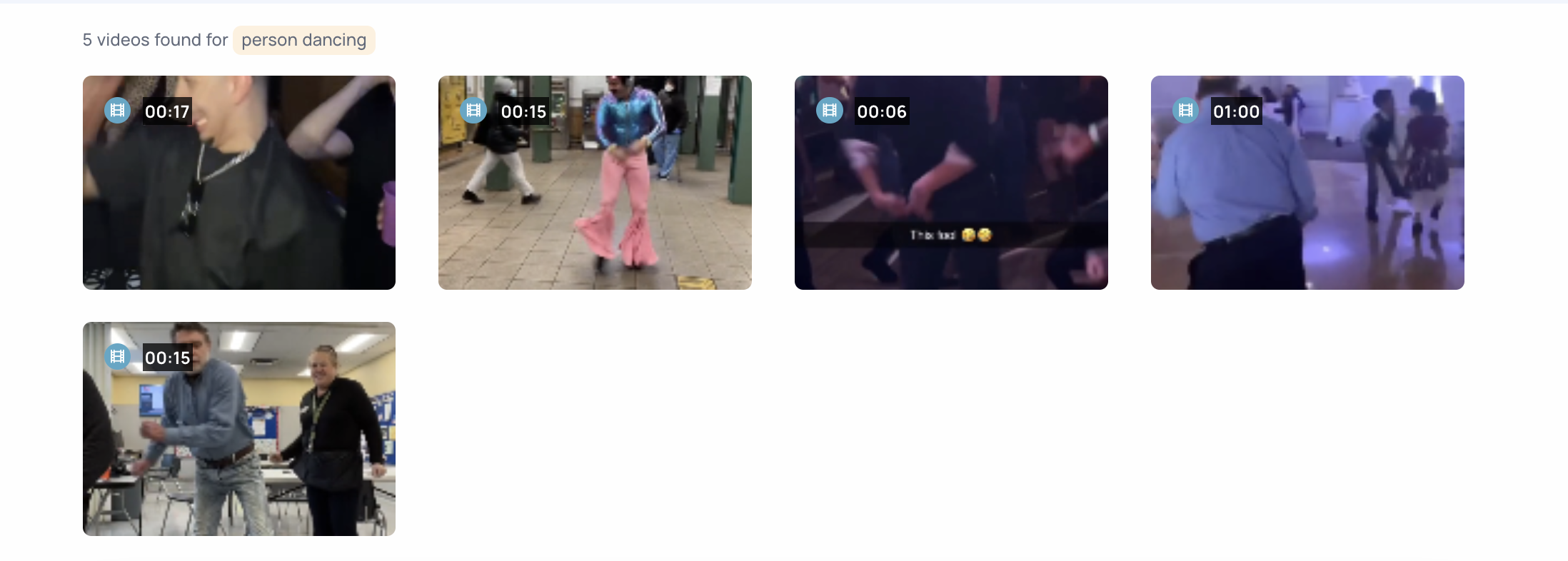As the role of video in media and entertainment continues to expand, video editors are facing the challenge of sifting through enormous amounts of footage to find the exact clips they need. The traditional means of searching and organizing videos—by filename, date, or manual tagging—are becoming less efficient, especially as video content scales up.
Semantic video search, a cutting-edge tool harnessing artificial intelligence (AI) and machine learning (ML), promises to revolutionize the way video editors work, transforming video searching from a time-consuming chore into a rapid, precision-guided process.
What is Semantic Video Search?
Semantic video search is an AI-driven technology that analyzes video content at a deep level. Instead of merely relying on manually added metadata like tags or filenames, semantic search understands the context and content of a video. It identifies objects, characters, speech, text, emotions, actions, and scenes to facilitate a search that's far more accurate and intuitive than traditional methods.
This innovative technology can provide unprecedented improvements in key metrics, including accelerating the editing process, identifying high-quality videos, and improving content discovery. Below, we delve into how semantic video search can bring about these pivotal enhancements.
Speeding up the Process
Before: Traditional search methods relied heavily on manually added metadata like file names, tags, or dates. This meant that video editors spent countless hours sifting through extensive footage to find the exact clips they needed for a project.
After: With semantic video search, the hunt for the right footage becomes a task of seconds, not hours. Suppose an editor is creating a documentary on wildlife and needs a clip of 'a lion chasing a gazelle at dawn'. Instead of going through hundreds of videos, the editor can input the description into the semantic video search tool. The AI, understanding the context and specifics of the request, swiftly sifts through vast video repositories to find the perfect clip.
The result? A process that could have taken hours, or even days, is completed in mere moments, significantly speeding up the overall video editing process.

Identifying Quality Videos
Before: Traditional methods have no capacity to assess the quality or relevance of a video. Editors had to rely on their judgment, often viewing hours of footage to decide which clips are of high enough quality for their project.
After: Semantic video search does not just find videos based on descriptive queries; it can also evaluate and rank them based on quality and relevance. For example, if an editor is creating a promotional video for a luxury hotel and searches for 'five-star hotel room with ocean view', the AI can prioritize clips that are visually appealing, well-lit, and clear.
In essence, semantic video search can serve as a preliminary quality control mechanism, presenting the most suitable, high-quality footage to the editor and minimizing the time spent on reviewing and selecting clips.

Improving Content Discovery
Before: Discovering new content that fits the narrative of a project was like looking for a needle in a haystack. Unless an editor already knew what existed in their video repository, discovering new and relevant content was a formidable task.
After: Semantic video search enables a new level of content discovery. Suppose an editor is working on a travel series and needs footage for an episode about Paris. They can input 'Paris in the springtime' into the semantic video search tool. The AI will not only find footage labeled with Paris and spring but can also discover content that visually represents the City of Love during springtime—blooming flowers by the Eiffel Tower, busy cafes in Montmartre, or street artists along the Seine.

Beyond the clear advantages of speed, quality, and content discovery, there are several other factors that may convince a video editor in the media and entertainment industry to utilize a semantic video search tool:
Creative Freedom
Semantic video search can liberate editors from the tedious task of manually searching for footage, allowing them to focus more on their creative vision. Instead of getting caught up in the technicalities of finding and organizing clips, editors can concentrate on what they do best—crafting compelling narratives and creating engaging content. This increased creative freedom can lead to more innovative and impactful work.
Competitive Edge
In the fast-paced media and entertainment industry, staying ahead of the competition is vital. Semantic video search offers a competitive advantage by significantly reducing production time and improving content quality. This efficiency can enable faster project turnarounds, allowing companies to deliver content promptly to their audience and gain a notable edge in the market.
Cost-Efficiency
Video production is often an expensive process. Semantic video search can help cut costs by reducing the hours spent on searching for and organizing footage, leading to more efficient use of an editor's time. Plus, with improved content discovery, companies can make the most out of their existing video assets instead of commissioning new footage, saving resources and budget.
Adaptability to Evolving Content Types
The media landscape is rapidly evolving, with new formats like 360-degree videos, VR content, and interactive videos gaining popularity. Semantic video search tools are often built to adapt to these trends. They can analyze and index various types of content, making them a future-proof tool that can grow and adapt with the industry's changing needs.
Improved Collaboration
Large media projects often involve multiple editors and other team members. Semantic video search tools can help streamline the collaboration process. When video assets are analyzed and tagged by an AI, it becomes easier for everyone in the team to find what they need, ensuring seamless collaboration and consistency across the project.

